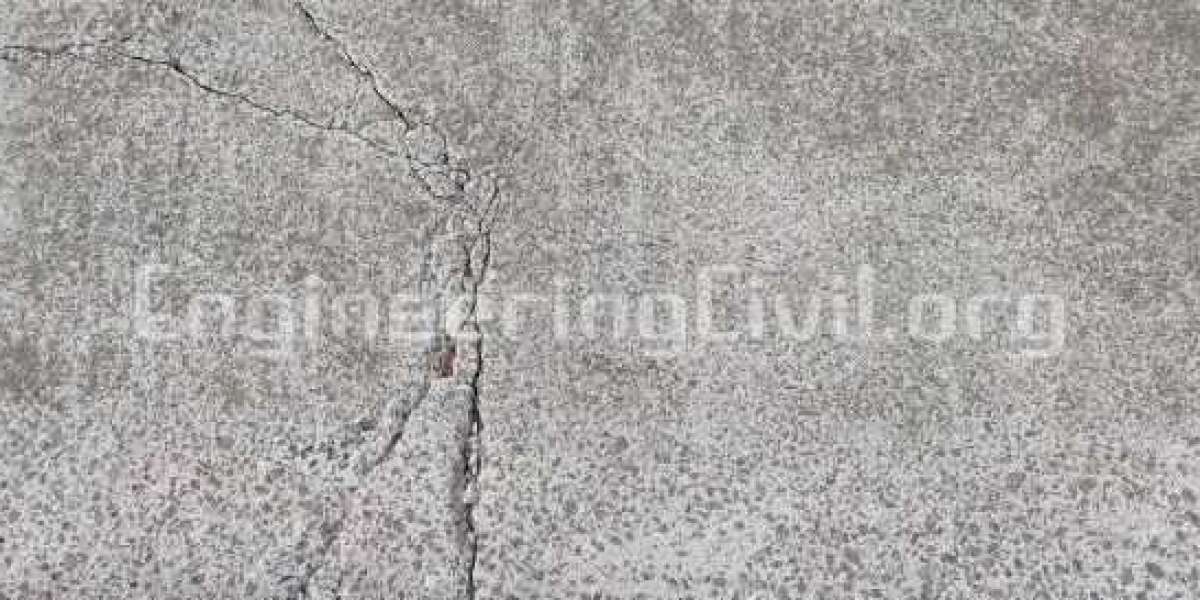Introduction: Understanding the Importance of Limiting Crack Width in Concrete
Concrete is one of the most widely used construction materials due to its strength, durability, and versatility. However, like any material, it is not immune to cracking. Cracks in concrete structures can lead to a variety of problems, including reduced structural integrity, water infiltration, and aesthetic issues. Therefore, it is crucial to limit crack width in concrete to ensure the long-term performance and durability of the structure.
In this blog post, we will explore the causes of concrete cracking and why it is important to limit crack width. We will also discuss the different types of concrete cracks and their implications. Additionally, we will delve into the factors that influence crack width in concrete structures and how they can be controlled. Furthermore, we will explore design strategies, reinforcement techniques, jointing systems, maintenance and repair strategies, as well as testing and evaluation methods for limiting crack width in concrete structures.
Causes of Concrete Cracking and the Need for Limiting Crack Width
Concrete can crack due to a variety of reasons, including shrinkage, thermal expansion and contraction, overloading, settlement, and chemical reactions. Shrinkage is one of the most common causes of cracking in concrete. As concrete cures and hardens, it undergoes a process called hydration, where water reacts with cement to form a solid mass. During this process, water evaporates from the concrete, causing it to shrink. If the shrinkage is restrained by external factors such as reinforcement or adjacent structures, cracks can form.
It is important to limit crack width in concrete structures for several reasons. Firstly, cracks can compromise the structural integrity of the concrete. When cracks form, they create weak points in the structure that can lead to failure under load. Secondly, cracks allow water to infiltrate into the concrete. This can lead to corrosion of reinforcement steel or other embedded materials, which can further weaken the structure. Additionally, water infiltration can cause freeze-thaw damage in colder climates, where water freezes and expands within the cracks, leading to further cracking and deterioration. Lastly, cracks can also have aesthetic implications, as they can be unsightly and diminish the overall appearance of the structure.
Types of Concrete Cracks and Their Implications
Concrete cracks can manifest in various forms, each with its own implications. Some of the most common types of concrete cracks include plastic shrinkage cracks, drying shrinkage cracks, thermal cracks, settlement cracks, and structural cracks.
Plastic shrinkage cracks occur during the early stages of concrete curing when the surface dries out faster than the interior. These cracks are typically shallow and appear as random patterns on the surface. While plastic shrinkage cracks are not usually a structural concern, they can be an indication of inadequate curing or improper mix design.
Drying shrinkage cracks occur as a result of moisture loss from the concrete over time. These cracks are typically wider and deeper than plastic shrinkage cracks and can extend throughout the entire depth of the concrete. Drying shrinkage cracks are a common occurrence in concrete structures and can be controlled through proper mix design, curing methods, and reinforcement.
Thermal cracks occur due to temperature differentials within the concrete. When concrete is exposed to high temperatures, it expands, and when it cools down, it contracts. If the temperature differentials are significant and not properly accounted for in the design and construction process, thermal cracking can occur. These cracks are typically wider and deeper than shrinkage cracks and can compromise the structural integrity of the concrete.
Settlement cracks occur when the underlying soil beneath the concrete compresses or settles unevenly. These cracks are typically wider at one end and taper towards the other end. Settlement cracks can be an indication of poor soil conditions or inadequate compaction during construction.
Structural cracks are typically more severe than other types of cracks and can occur due to overloading, inadequate reinforcement, or design flaws. These cracks can compromise the structural integrity of the concrete and require immediate attention and repair.
Factors Influencing Crack Width in Concrete
Several factors influence crack width in concrete structures, including the properties of the concrete mix, the environmental conditions, the design and construction methods, and the presence of reinforcement.
The properties of the concrete mix, such as the water-cement ratio, aggregate type and gradation, and admixtures, can significantly impact crack width. A higher water-cement ratio can increase shrinkage and cracking potential, while a lower water-cement ratio can reduce shrinkage and cracking. The type and gradation of aggregates can also affect crack width, as well as the use of admixtures that can improve workability or reduce shrinkage.
Environmental conditions, such as temperature and humidity, can also influence crack width in concrete. Higher temperatures can accelerate the drying process and increase shrinkage, while lower temperatures can slow down curing and increase the risk of thermal cracking. Additionally, exposure to freeze-thaw cycles or aggressive chemicals can also contribute to cracking.
The design and construction methods used for concrete structures play a crucial role in limiting crack width. Proper design considerations, such as providing adequate reinforcement, controlling joint spacing, and incorporating expansion joints or control joints, can help distribute stress and minimize crack width. Construction practices, such as proper curing techniques and adequate compaction, are also important in reducing cracking potential.
The presence of reinforcement in concrete structures can significantly impact crack width. Reinforcement helps distribute stress throughout the structure and can prevent cracks from propagating or widening. The type and placement of reinforcement, such as steel bars or fibers, can be tailored to specific design requirements to limit crack width.
Design Strategies for Limiting Crack Width in Concrete Structures
Design strategies play a crucial role in limiting crack width in concrete structures. Some of the key design considerations include proper mix design, reinforcement placement, joint spacing, and the incorporation of expansion joints or control joints.
Proper mix design is essential in controlling crack width. The water-cement ratio should be carefully selected to balance workability and strength while minimizing shrinkage. The use of low-shrinkage or shrinkage-compensating concrete mixes can also help reduce crack width. Additionally, the type and gradation of aggregates should be chosen to minimize shrinkage potential.
Reinforcement placement is another important design consideration. Reinforcement, such as steel bars or fibers, helps distribute stress throughout the structure and can prevent cracks from propagating or widening. The amount and spacing of reinforcement should be determined based on the structural requirements and anticipated loads.
Joint spacing is critical in controlling crack width in concrete structures. Joints provide relief points for shrinkage and thermal movement, allowing the concrete to crack in a controlled manner. Expansion joints are typically used to accommodate larger movements, while control joints are used to control crack width in smaller sections. The spacing and dimensions of joints should be determined based on the anticipated movement and crack width limitations.
Reinforcement Techniques for Controlling Crack Width in Concrete
Reinforcement techniques can be employed to control crack width in concrete structures. These techniques involve the use of steel reinforcement or fibers to enhance the tensile strength and ductility of the concrete.
Steel reinforcement, such as steel bars or mesh, can be embedded within the concrete to provide additional strength and prevent cracks from propagating or widening. The reinforcement should be properly placed and adequately anchored to ensure effective load transfer and crack control. Additionally, the use of post-tensioning or prestressing techniques can further enhance crack control by applying compressive forces to counteract tensile stresses.
Fiber reinforcement can also be used to control crack width in concrete structures. Fibers, such as steel, synthetic, or glass fibers, are added to the concrete mix to improve its tensile strength and ductility. The fibers help distribute stress throughout the concrete and can prevent cracks from propagating or widening. The type and dosage of fibers should be selected based on the specific design requirements and crack control objectives.
Use of Jointing Systems to Limit Crack Width in Concrete Pavements
Jointing systems are commonly used in concrete pavements to limit crack width and control the location of cracks. These systems involve the incorporation of joints, such as expansion joints or control joints, at regular intervals along the pavement.
Expansion joints are designed to accommodate larger movements in the pavement due to temperature differentials or settlement. These joints are typically filled with a compressible material, such as asphaltic plug or preformed joint filler, to allow for movement while maintaining a watertight seal. Expansion joints are typically spaced at regular intervals based on the anticipated movement and crack width limitations.
Control joints, on the other hand, are used to control crack width in smaller sections of the pavement. These joints are typically saw-cut or formed during construction and are filled with a joint sealant to prevent water infiltration. Control joints are spaced closer together than expansion joints and can help distribute stress and minimize crack width.
Maintenance and Repair Strategies for Limiting Crack Width in Concrete
Maintenance and repair strategies play a crucial role in limiting crack width in concrete structures. Regular inspection and maintenance can help identify cracks early on and prevent them from worsening. Additionally, timely repairs can help restore the structural integrity of the concrete and limit crack width.
Regular inspection of concrete structures is essential in identifying cracks and assessing their severity. Visual inspections can be conducted periodically to identify any visible cracks on the surface. Non-destructive testing methods, such as ground-penetrating radar or ultrasonic testing, can also be used to detect hidden cracks or assess the condition of reinforcement.
Timely repairs should be carried out to prevent cracks from worsening and to restore the structural integrity of the concrete. Small cracks can be repaired using epoxy or polyurethane injection techniques, which involve injecting a resin into the crack to fill and seal it. Larger cracks may require more extensive repairs, such as partial or full-depth patching, where damaged sections of the concrete are removed and replaced.
Testing and Evaluation of Crack Width in Concrete Structures
Testing and evaluation methods are used to measure crack width in concrete structures and assess their severity. These methods help determine whether crack width limits are being met and whether further action is required.
Visual inspection is one of the most common methods used to measure crack width in concrete structures. Crack gauges or rulers can be used to measure the width of visible cracks on the surface. The measurements can be recorded and compared to crack width limits specified in design codes or standards.
Non-destructive testing methods, such as ground-penetrating radar or ultrasonic testing, can also be used to measure crack width in concrete structures. These methods involve sending electromagnetic or sound waves into the concrete and analyzing the reflected signals to determine crack depth and width.
Additionally, destructive testing methods, such as coring or load testing, can be used to evaluate crack width in concrete structures. Cores can be extracted from the concrete and analyzed in a laboratory to determine crack width and other properties. Load testing involves applying a known load to the structure and measuring the resulting deflection or crack opening.
Conclusion: Best Practices for Achieving and Maintaining Crack Width Limits in Concrete
In conclusion, limiting crack width in concrete structures is crucial for ensuring their long-term performance and durability. Cracks can compromise the structural integrity of the concrete, allow water infiltration, and have aesthetic implications. By understanding the causes of concrete cracking, the different types of cracks, and their implications, as well as the factors that influence crack width, design strategies, reinforcement techniques, jointing systems, maintenance and repair strategies, and testing and evaluation methods can be employed to achieve and maintain crack width limits in concrete structures.
Some of the best practices for achieving and maintaining crack width limits in concrete structures include proper mix design, reinforcement placement, joint spacing, and the incorporation of expansion joints or control joints. Additionally, regular inspection and maintenance, as well as timely repairs, are essential in preventing cracks from worsening and restoring the structural integrity of the concrete. Testing and evaluation methods can be used to measure crack width and assess their severity, ensuring that crack width limits are being met. By following these best practices, concrete structures can be designed, constructed, and maintained to limit crack width and ensure their long-term performance and durability.



